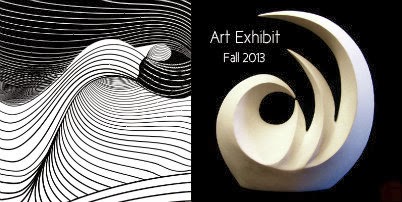SCELC Product Review Committee meeting at Armacost Library, June 21, 2012
If you're a student or faculty member at the University of Redlands, you might encounter librarians when you come to the library with a question about your research, see them around campus at an event or committee meeting, or find one of them teaching an instruction session for your class. On campus, each of our librarians focuses on faculty and students in a set of related academic subjects (arts and humanities, education, business, interdisciplinary studies, behavioral and social sciences, natural and physical sciences).
Armacost librarians also have functional roles behind the scenes, overseeing different aspects of library operations. Sometimes this work takes us away from campus. For example, as part of my work as Electronic Resources Librarian, last week I found myself traveling to the Bay Area to attend a committee meeting related to the Statewide California Electronic Library Consortium (SCELC).
SCELC is a nonprofit organization representing 110 member libraries in California, Nevada and Texas. It negotiates advantageous prices and user-friendly license terms for e-books, e-journals and databases purchased by member libraries. Partnering with SCELC increases our negotiating power in the market for scholarly information, allowing us to secure significant discounts off the list price of electronic resources, and stretch library funds to acquire a broader range of information. SCELC also educates its members about the economic and technical challenges facing libraries through email listservs, committees and an annual regional conference.
Last week's meeting of the SCELC Product Review Committee (PRC) began with committee members sharing recent developments at their libraries. Several attendees echoed initiatives that we are currently undertaking at Armacost Library, such as creating a
new repository for student research, or defining the role of information literacy and
library instruction in a new campus plan for general education. Many libraries are investing heavily in e-books, allowing student and faculty research interests to drive the creation of on-demand electronic collections available 24/7. The concept of "resource sharing" also came up frequently. The landscape of scholarly information has become so vast that even the largest research libraries cannot claim to collect "everything". Each library is increasingly connected to the collections of other libraries through mutual agreements and technical infrastructure. If you've placed an
interlibrary loan request or obtained a
reciprocal borrowing card to check out books at another library in the area, you've experienced two traditional types of resource sharing agreements among libraries. More recent collaborations seek to speed up the experience of lending books and articles between libraries, or create
shared archives of older magazine and journal articles to help preserve the scholarly record.
After we all shared the latest news from our libraries, the next item on the agenda was a discussion with representatives from the New York Times. Publishers and database vendors frequently visit the PRC to discuss their newest offerings and better understand the needs of their customers -- libraries and the students and faculty that use them. Librarians use these discussions to influence publishers' business decisions at an early stage of development, and anticipate future trends that might affect our campuses. The meeting with the New York Times reps delved into the economics and business strategy of the newspaper industry, now that people can get news from Facebook, Google News or blogs as an alternative to subscribing to a print newspaper. There are no easy answers to the question of how newspapers like the Times can sustain their operations. One reason their representatives approached a group of academic librarians is that the Times has recognized that partnering with educators is key to helping raise a generation of new readers interested in substantive discussion of current events.
After lunch, the agenda included discussion of how SCELC could help smaller academic institutions support the open access (OA) movement. While
mandates at large research institutions or science grants from agencies like the
National Institutes of Health (NIH) come to mind most frequently when many of us think of open access publishing, smaller colleges and universities - including many SCELC members - have faculty, students and affiliated researchers interested in OA publishing as well. One committee member observed that many faculty have had success
negotiating open access rights with their publisher on an individual basis.
The agenda concluded with discussion of how librarians can encourage database vendors make their resources accessible to library visitors with disabilities. A few years ago the library conducted an accessibility audit in partnership with the University's Working Group on Disability Issues, and the question of how to promote database accessibility has been on our minds since then. Increasing the number of databases that either support assistive technology like as screen readers, or include built-in text-to-speech functionality is a good start. Database vendors are looking to librarians to articulate their users' needs, so I was glad to see the Product Review Committee take up the conversation.
Given the way the electronic information landscape is changing, professional development is crucial for librarians. My colleagues and I learn a lot by attending conferences and participating on committees like the PRC. Now that I'm back at the library, I look forward to applying what I've learned to my day-to-day work with electronic resources.
Sanjeet Mann
Electronic Resources Librarian
University of Redlands






























